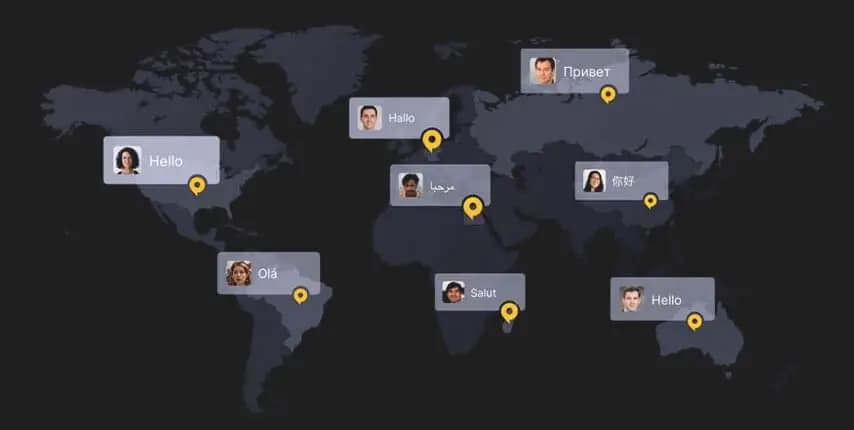Culturalization
Localization, known as a multi-layered process, considers three main categories. First, linguistic issues, which includes all matters of translation of text and UI. Second, technical issues concerning the potential need to redesign and reengineer the product. Finally, content and cultural issues that take care of adapting the information, presentation, and functionality of the product for a local audience. The last category is referred to as “culturalization”, which we’re discussing throughout this article.
In this blog, you will read:
- Culturalization definition
- How Culturalization Works
- Are there industries that are more attractive to culturalization?
- Practicing Culturalization by Game Developers
- Survey, Analyze, Improve
- How Can We Help?
Culturalization definition
Culturalization is adapting content for different cultures considering different traditional variables. It’s more than the language component, it rather spots the sensitive points of an exact market.
It applies to video games, software, graphic materials, educational materials, literature, movies and voice over, etc. Take video games as an example, customizing the character to fit properly to the target audience is related to as “cultural adaptation” or in another word: “Culturalization”. Hence that customizing the character includes considering its body language, gestures, symbols, dialect, etc.
Game industry professionals use the term “culturalization” to refer to the process of modifying any elements, verbal and nonverbal, of an original video game that are deemed obscure, offensive, difficult to grasp by the target audience, or perceived as not tailored to them because of some cultural incongruity. Reactive culturalization is to avoid disruptive issues to allow a game to remain in the target market.
Adapting your product to a new market should be aligned with your marketing strategy. This includes bringing cross-cultural backgrounds and focusing on geopolitics. Compare between what you want to achieve with your content/product and what’s going to work in the target market. Then find an intersection between the two to apply to your product.
How Culturalization Works
Culturalization does not contradict with the creativity of the product, but rather supports it. However, it should fix any potential problem. This should be done in an early stage of product creation, which some companies consider when targeting global consumers. Hence that, in some cases, multicultural products get more global consumers and more profits in return. Culturalization also increases your product’s viability.
Sometimes, the product is already in a particular market and the developers want to enter a new market that they need to adapt to. In this case, the process will include doing the research, redeveloping and editing the content.
Are there industries that are more attractive to culturalization?
Cultural adaptation is more attractive to some industries than others, especially the ones that contain a lot of creative content. But this is not the rule, as any product can be sensitive to a new market.
In fact, any adjustment done to a product to fit the local convention can be regarded as culturalization. For example, redesigning a car to have the driver’s seat on the right or the left side, depending on the country, is an act of culturalization.
However, in software localization, game localization differs from other categories. Game content contains character personality and look, character voice, background sounds and music, and sometimes even the food and tools they use during the game.
Games are highly complex cultural products that may contain narrative and plotlines, significantly different GUI and content that communicates game goals and rules. Video games are also entertainment software, which may be tricky for localization into different markets, as what’s considered funny and exciting for one market is not necessarily so for another.
Practicing Culturalization by Game Developers
The following are the three key steps for games culturalization:
- First step: gain awareness of potential cultural issues. Markets such as China and the Middle East can be sensitive to historical, religious and political content*.
- Second step: ask questions about the content of the game, i.e. does the game content have specific, offensive or unintended meaning to some people?
- Third step: dedicate team members responsible for culturalization only.
These key steps seek to cultural awareness and ask questions regarding the game’s content.
*Some cultural adjustments has nothing to do with complex political and historical matters, but purely follows country-specific conventions such as date formats, time, postal codes, the use of commas as decimal points; have been acknowledged as often requiring adaptation in the process of localization.
Survey, Analyze, Improve
Before going launching, test your prototype with the locals first. Send the version to them to test the whole experience and send a survey including questions about their experience. Analyze their answers carefully. Finally, make your decisions about considering their concerns and what you should or shouldn’t redesign.
How Can We Help?
Saudisoft has been working with global customers who have different cultural backgrounds. This gives us the knowledge and expertise required to help you localize your product, taking care of the cultural aspects very well.
You Can Also Read:
- Globalization, Internationalization, Localization and Translation
- Internet Speed impact on Localization Industry
- What is the difference between Translation and Localization?
- Translation Tools Now and Then
- Amazing Facts about Translation Industry






